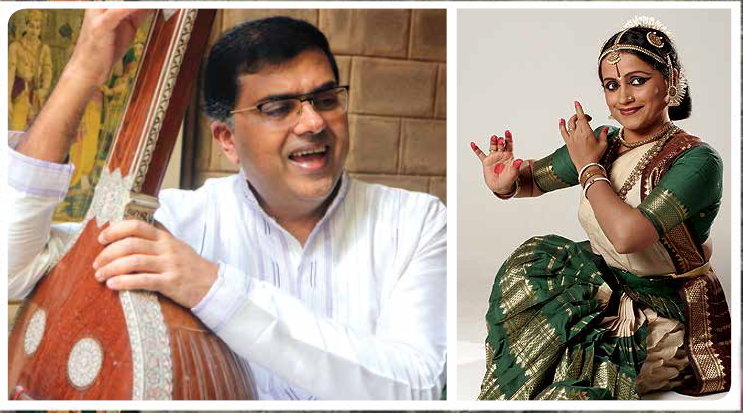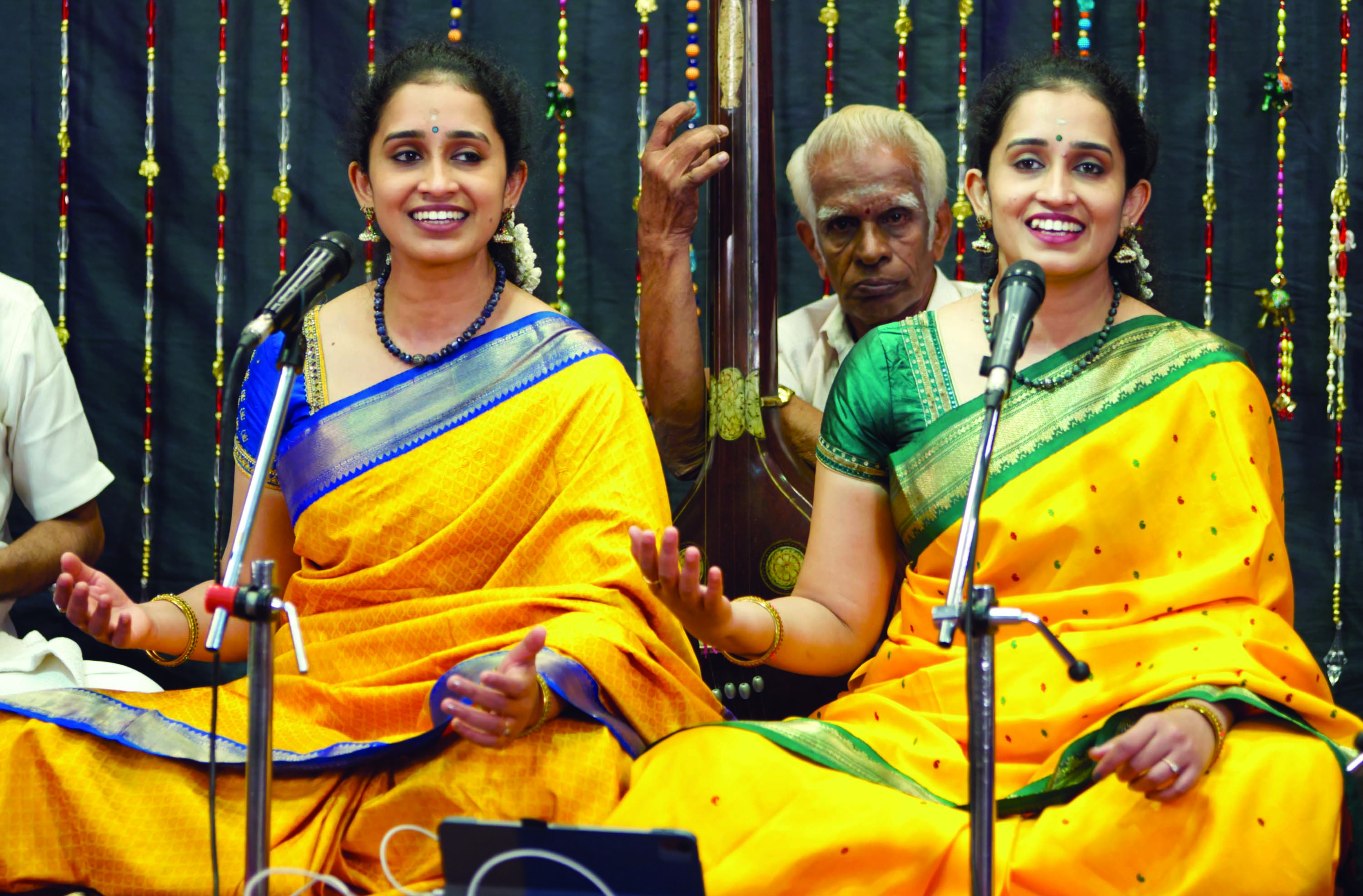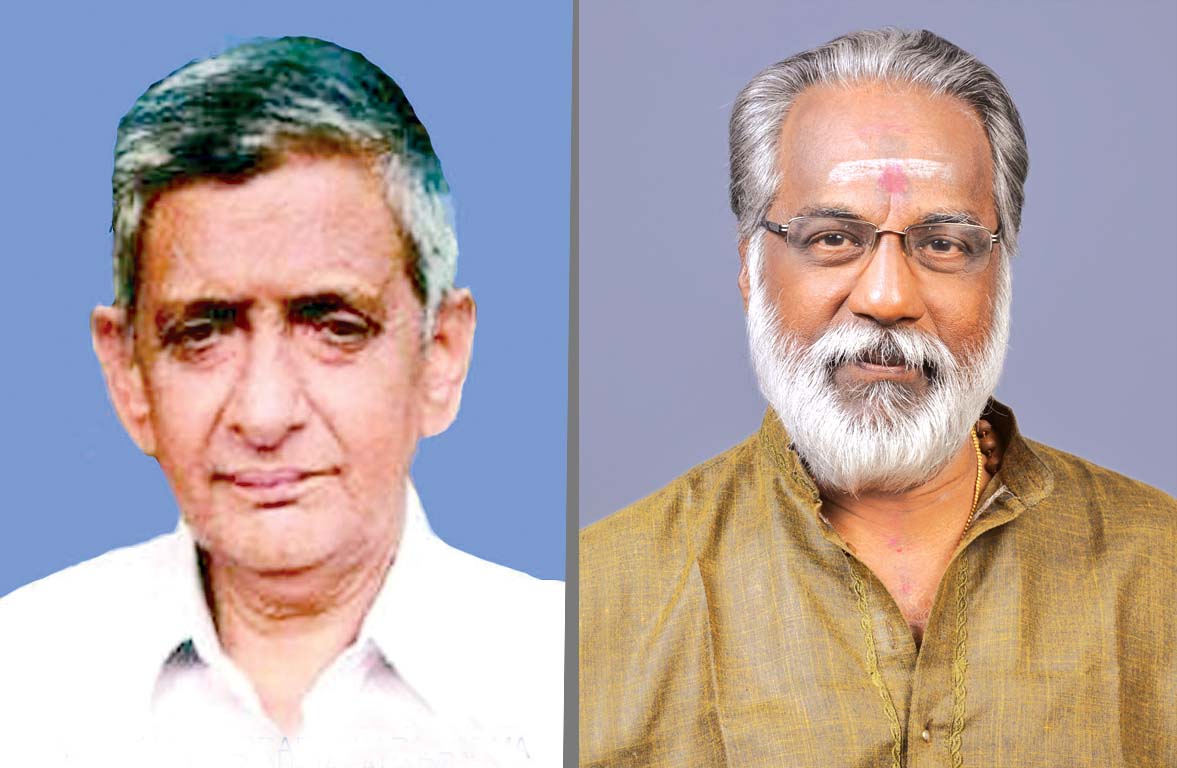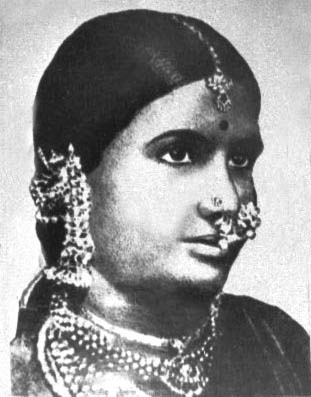Art makes this family ‘Art runs in the family’ is a cliché we are tired of hearing. But what when the entire family is made of artists! Let’s say ‘Art makes this family’. In a conversation with the ‘Ambalam’ family, Sruti caught up with Indira Kadambi, T.V. Ramprasadh, their son Vishnu R. and daughter-in-law Ramya Suresh for a chat on their work, journey, creative process, and more. Every artist’s journey begins with a small glint in the eye where the dream to pursue the art is born. And someone comes along to hand-hold those dreams to greater horizons. Indira Kadambi has been widely acknowledged as a brilliant Bharatanatyam dancer, a sensitive, innovative and intelligent choreographer. Critically acclaimed for her performances, Indira has carved a niche for herself in the world of performing arts. T.V. Ramprasadh’s eminence as a master performer, composer and scholar spans over 40 years of his performing and 31 years of teaching experiences. Recognised for his uncompromising adherence to core techniques and yet unbounded manodharma, he is one of the respected artists amongst the senior Carnatic musicians at these times.
Flavours of the season It was time for nostalgia as I stepped into a sabha to listen to a concert after almost two long years. Margazhi was back, with the distinct nip in the air and the renowned ‘December season’. Small crowds were entering the hall, quietly talking about the various concerts they had listened to online, recommending live concerts for the others to attend. Despite many sabhas opting to take the music season online, sabhas such as Narada Gana Sabha, Sri Parthasarathy Swami Sabha, R.R. Sabha, Sri Krishna Gana Sabha, Mylapore Fine Arts Club, among others, chose to host live concerts, much to the delight of many rasikas. Some sabhas, such as Sri Thyaga Brahma Gana Sabha and The Indian Fine Arts Society held three concerts a day, while many restricted themselves to one concert a day. From the carefully chosen morning lecture demonstrations at the Parthasarathy Swami Sabha; to the afternoon concerts at the Indian Fine Arts Society; and the evening concerts at the Mylapore Fine Arts and Narada Gana Sabha—each sabha did its best to offer the rasikas a variety. It is to be noted that the inclusion of nagaswaram recitals as the invocatory concert has increased in the past year. Archana and Aarathi’s concert at Swami Haridoss Giri Hall—the newly renovated mini hall of the Narada Gana Sabha—included the rendition of rare kritis such as Sree Bhargavi in raga Mangalakaisiki (composed by Muthuswami Dikshitar) and Emani pogadutura (composed by Tyagaraja in the vivadi raga Varunapriya). An interesting aspect of their concert was the inclusion of kalpanaswarams—with kuraippu at the rishabha—in the Gaula Tiruppavai of Andal—Vaiyatthu vaazhvigal.
MAVELIKKARA PRABHAKARA VARMA The venue was a temple in Mavelikkara, a small town in Alappuzha district of Kerala, where thousands of music lovers had gathered to drench themselves in the music of nagaswara chakravarty Tiruvaduthurai T.N. Rajarathnam Pillai (TNR). Before the concert began, a boy was brought to TNR with the request that he bless the music student. The maestro asked him to sing and the lad unleashed an alapana of Todi followed by Jesinadella, which TNR had made famous! The youngster sang TNR’s sangatis with all the flourishes and long karvais of nagaswaram music—which remained a dream for many aspiring musicians. After the alapana, the nagaswara giant hugged the boy and blessed him for a great career in music. The boy was Mavelikkara Prabhakara Varma—who later went on to become a successful musician and a revered guru who groomed hundreds of musicians. PROF. P.R. KUMARAKERALA VARMA Any article on Prabhakara Varma would be incomplete without a peep into the profile of Prof. P.R. Kumarakerala Varma, his prime disciple who sang along with him for many decades; the duo presented many memorable concerts across the country. Prabhakara Varma was the guru and paternal uncle of Kumarakerala Varma. Kumarakerala Varma was born on 18 November 1940, as the second son of E. Rama Varma Raja of Ennakkad Palace and Seetha Devi Thampuratty of Pallom Palace, in Pallom, Kottayam district. He learned the basic lessons of music from native musician Rudra Warrier and later came under the tutelage of Vadakkancheri Rama Bhagavatar. At thirteen, Kumarakerala Varma made his concert debut at Chengannur Mahadeva Temple, and continued his training with Vechoor Harihara Subramania Iyer and Mavelikkara Prabhakara Varma.
Tradition of javalis in Karnataka I wish to present a rejoinder to the article titled The javali - its prosody and origin, written by eminent and revered scholar, V.A.K. Ranga Rao, which was published in the September 2021 issue of Sruti. Karnataka has a vast and hoary tradi-tion of javalis. These sringara padas of light order, in colloquial language might have originated during the great Vijayanagara empire, as did so many other forms like Yakshagana, Bhagavata Mela, Kuchipudi and some semblance of Bharatanatyam also, as we get to read the cultural history of this period. Kannada and Telugu languages flourished during this period. The Dasavarenyas who existed between the 13th and 15th centuries, must have created songs like Ranganyatake barane by Purandaradasa, Indunee karatare of Kanakadasa, Elladibandyo of Sripadaraya, to name some, which later evolved into a form called ‘javadi’ / ‘javali’—a very lilting, entertaining song to be sung and danced with nayika bhavas. Musicologist and danceologist Mahamahopadhyaya Dr. R. Sathyanarayana, and also the eminent art-critic and musicologist B.V.K. Sastry have written in their essays, that javalis originated from Kannada nadu. There are prolific composers of javalis and profusion of Kannada javalis which all of us in Karnataka perform. Natya Saraswati Jatti Thayamma was famous for rendering javalis both in Kannada and Telugu. While rendering a Kannada javali, a ‘khanda padya’ comes as a prelude to the javali, to establish the mood of the nayika. The ‘jaru’ adavus add beauty to the rendering of the javali, again signifying the mood of the nayika, knit around the tala that the javali belongs to.
CONTENTS Vol. 29
Issue 4 April 2022
6 News & notes
14 Birthday calendar
16 Indira Kadambi & T.V. Ramprasadh
28 Season 2021-22
v Impressive show by the young
brigade
v Flavours of the season
38 Musicians of Kerala
v Mavelikkara Prabhakara Varma and
P.R.
Kumarakerala Varma
44 Perspectives v Tradition
of javalis in Karnataka
46 From the Editor
Front
Cover: Indira Kadambi & T.V. Ramprasadh
The music season: Kalyanapuram S. Aravind
Anahita and Apoorva
K.S. Vishnudev (photo by Hemamalini S.)
No.
451






